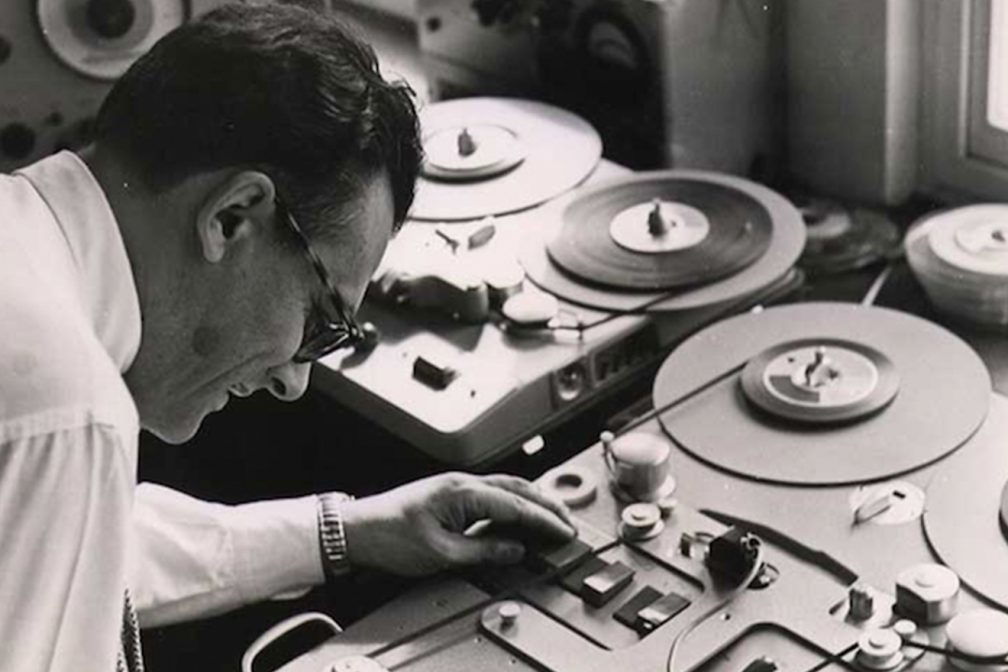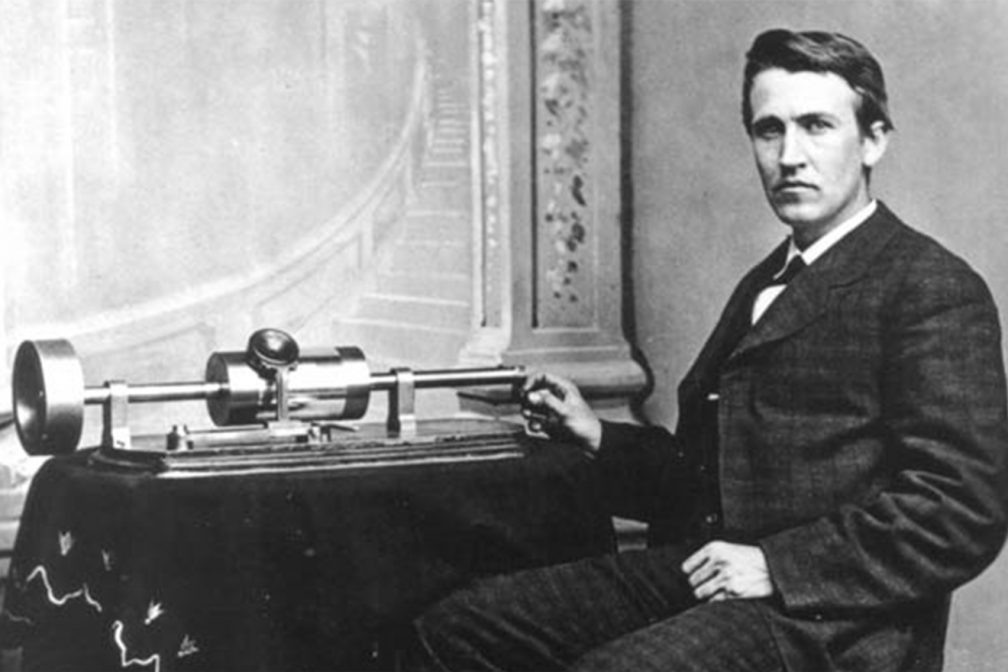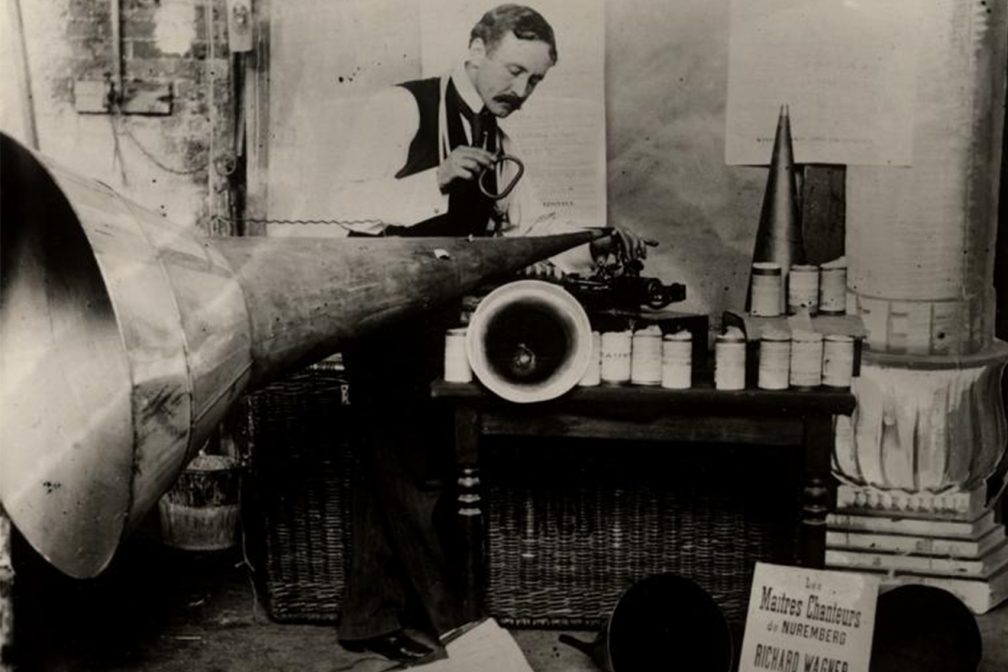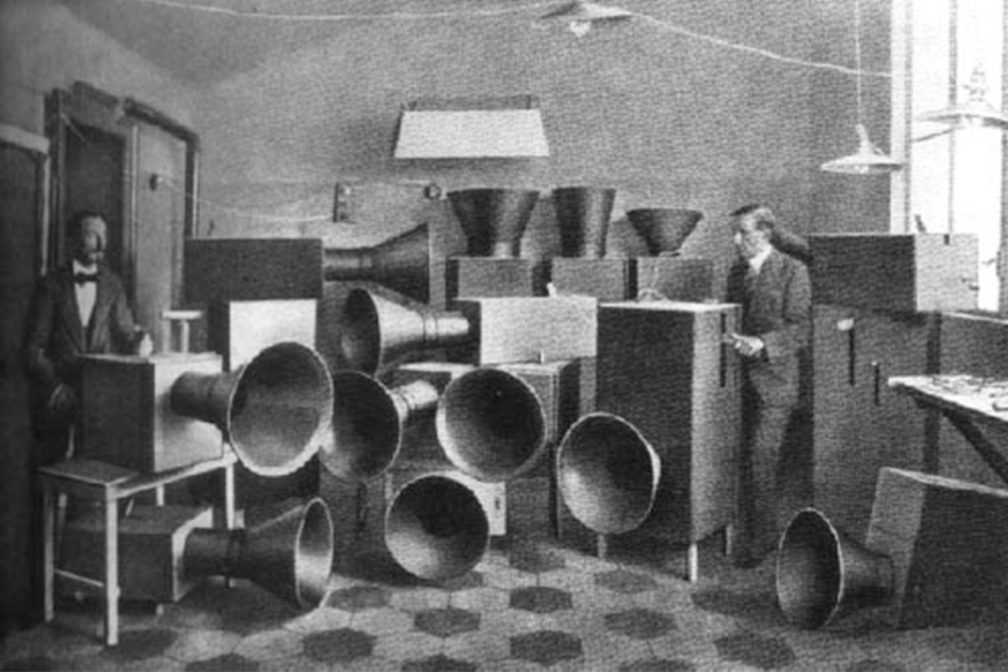
The three eras of pre-digital recording in 18 photos (1877 - 1975)
Enter a world of tape, circuits and mechanical madness
The modern day recording process is by no means a simple task. Creating solid sounds that are worthy of widespread consumption requires a technical knowhow and a creative ear which can ultimately turn into an arduous and meticulous task that takes weeks, months and if not years to complete.
Having said that, the ability to open up Ableton (or any DAW for that matter) and shop out projects with no consequences pales in comparison to the complexities of old school recording methods. From the invention of the phonograph to Robert Moog's brilliant analog adventures, exploring the inventions of pre-digital sonic pioneers and understanding their painstaking recording methods of can add some much needed perspective for budding music producers.
Take a trip back to the days of old with these 18 astonishing photos of pre-digital music recording equipment.
The Acoustic Era (1877 - 1925)

In 1887, Thomas Edison creates the worlds first phonograph after successfully recovering 'Mary's Little Lamb' from a strip of tinfoil wrapped around a spinning cylinder.

Lionel Mapleson tweaks the recording equipment he used to record performances at the New York’s Metropolitan Opera House (1902). (New York Public Library)

The Art of Noise: Futurist painter Luigi Russolo aims to open our ears to the noise of the modern age with his jarring mechanical orchestra (1913). (UbuWeb)
"Every manifestation of life is accompanied by noise. Noise is therefore familiar to our ears and has the power to remind us immediately of life itself. Musical sound, a thing extraneous to life and independent of it... has become to our ears what a too familiar face is to our eyes."

The Victor Orchestra crowds around an enormous horn at the Victor Talking Machine Company studio for an early acoustical recording session. (Library of Congress)


